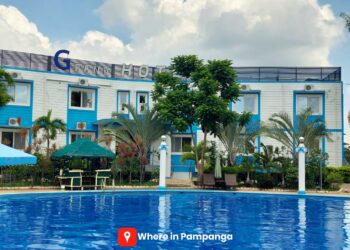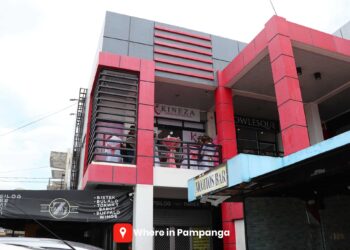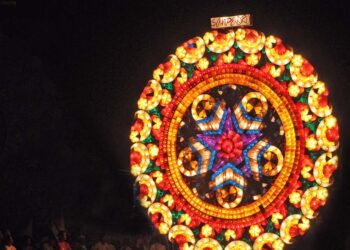The Municipality of Mexico is a first-class municipality located in the coastal province of Pampanga in Region III or Central Luzon.
The town of Mexico is located in the heart of Pampanga
The neighboring cities closest to Mexico are San Fernando, Pampanga, Angeles, Mabalacat, Pampanga, Malolos, Bulacan, Gapan, Nueva Ecija, and Meycauayan, Bulacan. The nearest metropolises are Santa Ana, Pampanga, San Luis, Pampanga, Santo Tomas, Pampanga, San Simon, Pampanga, Bacolor, Pampanga, and Arayat, Pampanga.
During the Spanish Colonial Period, the town of Mexico was widely-known as “Nuevo Mexico.”
History
The aboriginal pre-Hispanic name of the town as per the pseudo-etymology was alleged ‘Masicu or Maca-sicu’, wherein, the Spanish colonizers spelled it as “México.”
It is stated that the town was named ‘Masicu’ because it’s an implementation of the quantities of Chico trees. Although, chico trees are not homegrown in the country and were brought in by the Spanish Colonizers originated from what we all knew now as a country, “Mexico.” Some allegations that the name was derived from the word “siku” (elbow) which referred to the elbow-shaped bends of the Abacan and the Pampanga River. There are no official documents that can support the town being called Masicu. It is believed that the origin of the latter name is due to a simple misusage of the town’s name by some townsfolks.
Written on the official documents of the Augustinian in Libros de Gobierno Eclesiástico, the town of Mexico was created that served as a river trading seaport in the year 1581 and was initially called “Novo México” (the Old Spanish term of Nuevo México, “New Mexico”) after the country, Mexico City. When the Philippines was once a part of the Mexico City governed Viceroyalty of New Spain, Mexico of Pampanga, logged at least thousands of Mexican immigrants per year, who migrated to the town.
The town of Mexico became the capital of the newly formed province of Pampanga According to Gaspar de San Agustin, once wrote that Mexico was one of the most “beautiful and charming” centers in the province while staying at the province. In the year 1581, the Parish of Santa Monica, an opulent church made from stone and tiles was erected. The town of Mexico was also once part of the City of San Fernando, which includes the area of Angeles City.
Don Francisco Maniago, a local leader who originated from the town of Mexico spearheaded the Pampanga Revolt in opposition to the Spanish Regime in 1660. The revolt sparked due to the enforcement of forced labor (known as Polo y Servicio) and rice tributes (bandala) by the Spanish Colonial Government. However, in 1661, the revolt was blocked by then Governor-General Sabiniano Manrique de Lara.
The Authorities of the Spanish Colonial Government removed México from its political status after the Pampanga Revolt by transferring the provincial capital to the town of Bacolor. However, it’s continued its strategic economic status, particularly among the Lúsung Chinese and their mestizo lineage.
By the 18th century, the Chinese dealers and their mestizo de sangley lineage who were living in México, Guagua, and Malabon had created and upheld business and social affiliation with one another. Cascos and Sampans continued the flow of goods along the Malabon-Guagua-México chain. Like the Chinese sector of Manila, the commercial epicenter of México became notorious as the Parián.
General Maximino Hizon gathered Kapampángans to have an altercation against the Spaniards under Emilio Aguinaldo and commanded capital punishment of the Parish priests of México and San Fernando. When the Americans became the new colonist, General Maximino Hizon was promoted to become supreme commander of all the Philippine Forces in Pampanga. He was apprehended by the Americans in 1901 and expatriated to Guam after he refused to swear his loyalty to the United States. He died while being in exile on September 1, 1901
Barangay
Mexico is governmentally subdivided into 43 barangays.
| Acli | Anao | Balas | Buenavista | Camuning |
| Cawayan | Concepcion | Culubasa | Divisoria | Dolores (Piring |
| Eden | Gandus | Lagundi | Laput | Laug |
| Masamat | Masangsang | Nueva Victoria | Pandacaqui | Pangatlan |
| Panipuan | Parian (Poblacion) | Sabanilla | San Antonio | San Carlos |
| San Jose Malino | San Jose Matulid | San Juan | San Lorenzo | San Miguel |
| San Nicolas | San Pablo | San Patricio | San Rafael | San Roque |
| San Vicente | Santa Cruz | Santa Maria | Santo Domingo | Santo Rosario |
| Sapang Maisac | Suclaban | Tangle |
Festivals
Mexico Day
The celebration is held every 24th of April. This is observed as the Mexico Day, following the date of the founding of the town and parish on April 24, 1581. (Also, the Feast of the Conversion of Saint Augustine).
Mexico’s Town Fiesta
Mexico’s town fiesta is commemorated in honor of its patron saint, Saint Monica (Mother of Saint Augustine) every May 4.
The Feast of Virgen dela Consolacion y Correa
The townsfolks of Mexico, Pampanga commemorate the feast of Virgen de la Consolacion y Correa (Our Lady of Consolation and Cord; Patroness of the Augustinian Order) every September 4, in which they obtain blessed cincture replicating the gesture of the Virgin Mary giving her own cincture to Saint Monica during her anguish and mourning at her son’s misgivings.
Sanikulas Festival
The Sanikulas Festival is celebrated every September 10th honoring Saint Nicolas de Tolentino. Bread/cookies (a local delicacy in the town with arrowroot as their main ingredient) are eaten. The pastries are alleged to be sanctified and miraculous and are eaten by children, the elderly, and sick people. Atching Lilia Lising-Borromeo is also well-known for baking San Nicolas cookies.
Mais Festival
Mexico, Pampanga’s Mais Festival happens every month of May and is anticipated to showcase its corn industry. The festival, which features a procession of floats made of corn crops and materials, is always held in Barangay Anao. The said village is one of the major producers of commercial and industrial corn variations in Mexico. The festival showcases cultural presentations, costumes composed of corn materials, and cooking demonstrations on how to use corn ingredients in typical Kapampangan cuisine.
Lubenas Pascu
The Mexicanos celebrate Christmas Day by the yearly “Lubenas Pascu”. It is during this festivity that they display colorful lanterns and ornamented carrozas. The 9-day celebration is being held every month from December 14th – 24th.
Landmarks and Attractions
The Hizon Ancestral House
It is the home of Kapampangan chef and culinary expert Atching Lilia Lising-Borromeo. The ancestral house is situated at Barangay Parian, Mexico Pampanga. Formerly owned by the family Doña Maura Hizon-Lorenzano, the ancestral house now serves as the kitchen for the culinary wonders of Atching Lilian.
Maximino Hizon Monument
The monument was erected in commemoration of one of the utmost Kapampangan revolutionary heroes and can be seen on the Municipal Hall grounds. Hizon was born and raised in the town of Mexico, Pampanga. He joined the Katipunan in 1896 and played an important role in the revolt for the liberation of the Philippines.
Santa Monica Parish Church and Belfry
The church was erected by Fr. Jose de la Cruz in 1665 but was wrecked during an earthquake in 1880. After the earthquake, the only thing that was left was the remains of the Belfry Tower of the prior Augustinian-run church.
San Jose Matulid Chapel
It is supposed to be the oldest church in Pampanga and in Asia. Even though there were no official written accounts that can confirm the exact founding of the chapel, the residents claim that it is older than the Sta. Monica Parish Church was constructed by the Augustinian friars in 1665. San Jose Matulid chapel could have been erected in the late 1580s.
The Lakeshore
A first-rate residential, commercial and recreational development project of Central Country Estate Incorporated.
Beverly Place
It’s a development project of the Sta. Lucia Realty. It is supposed to be designed to develop as a premier shopping and business capital of Central Luzon.
References:
*https://en.wikipedia.org/wiki/Mexico,_Pampanga
* https://en.wikipedia.org/wiki/San_Jose_Matulid_Chapel
*https://pampanga.gov.ph/index.php/shopping/147-capitol/districts/district-iii/mexico/263-municipality-of-mexico.html
*https://www.primidi.com/mexico_pampanga/history
*https://www.philatlas.com/luzon/r03/pampanga/mexico.html
*https://pampanga.gov.ph/index.php/the-government/189-capitol/tourism/municipality/323-mexico.html
*https://www.zamboanga.com/z/index.php?title=Mexico,_Pampanga,_Philippines
*https://pampanga.gov.ph/index.php/the-government/189-capitol/tourism/municipality/323-mexico.html
*For corrections or commentaries, please email us at whereinpampanga@gmail.com


















